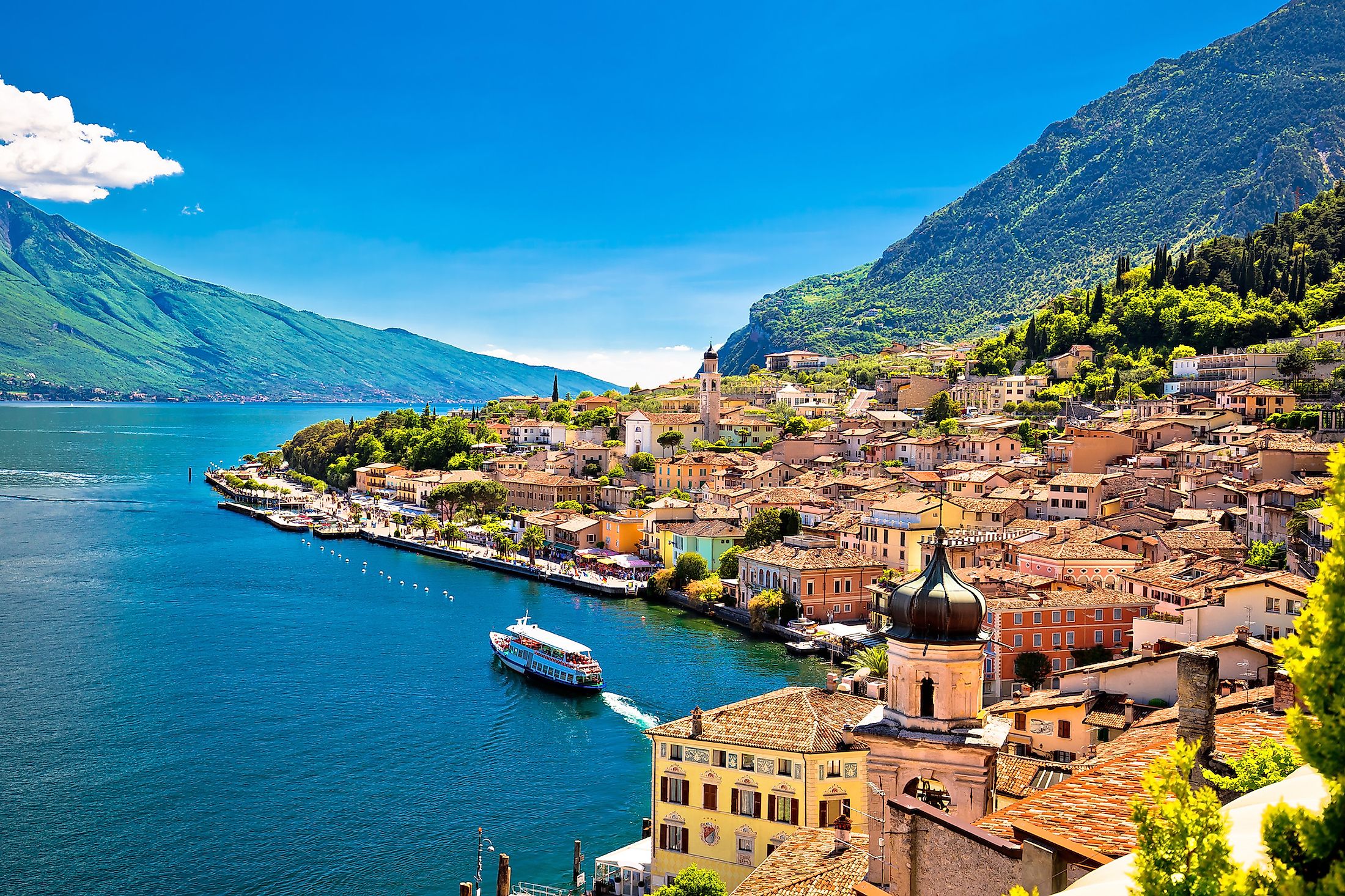
Lake Garda
Lake Garda, also known as Benaco or Lago di Garda, is Italy’s largest lake by surface area and a popular holiday destination in the northern part of the country. The lake is located near the foot of the Alps at an elevation of 65 meters above seas level. It sits between the provinces of Trentino, Veneto, and Brescia. The region around the lake experiences a mild climate which favors the growth 0f several plants and vegetation, including olive trees, palm trees, and magnolias. Lake Garda and the surrounding area hosts a variety of sports, including mountain biking, swimming, windsurfing, and sailing. The lake shares its name with Garda Town in Veneto Province.
Where Is Lake Garda?
Lake Garda is located in Northern Italy between three provinces, Veneto, Brescia, and Trentino. The lake’s western and southwestern shores are in Brescia, the northern shore is in Trentino, and Veneto is on the east and southeast. Lake Garda is located halfway between Verona and Brescia, and Milan and Venice. It is Lombardy’s easternmost lake of the four major lakes, namely (from west to east) Maggiore, Combo, Iseo, and Garda. Villages and towns on the shores of Lake Gardo include Riva del Garda, Arco, Sirmione, Tremosine, and Bardolino. The lake is approximately one hour drive from Milan.
Important Features
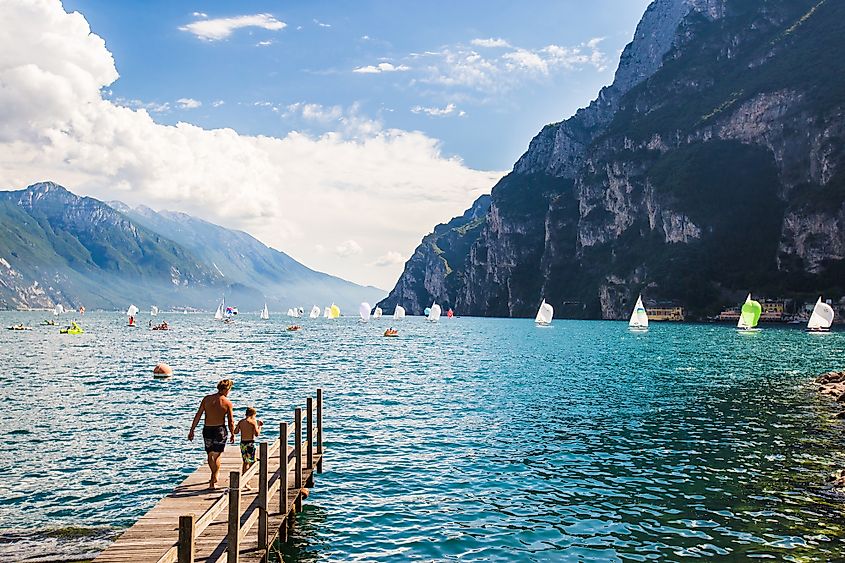
Lake Garda is Italy’s largest lake and the third-largest lake in the Alpine region by surface area after Geneva and Constance. The lake is 54 kilometers long, 3-18 kilometers, and covers a surface area of approximately 370 square kilometers. The lake is located at an elevation of 65 meters above sea level and has a total shore length of 158.4 kilometers. Lake Garda is 346 meters deep at the deepest point and has an average depth of 136 meters, making it less deep than Lake Maggiore, Italy’s second-largest lake. It contains 50.4 cubic kilometers of water and retains inflows for about 26.8 years.
Geography Of Lake Garda
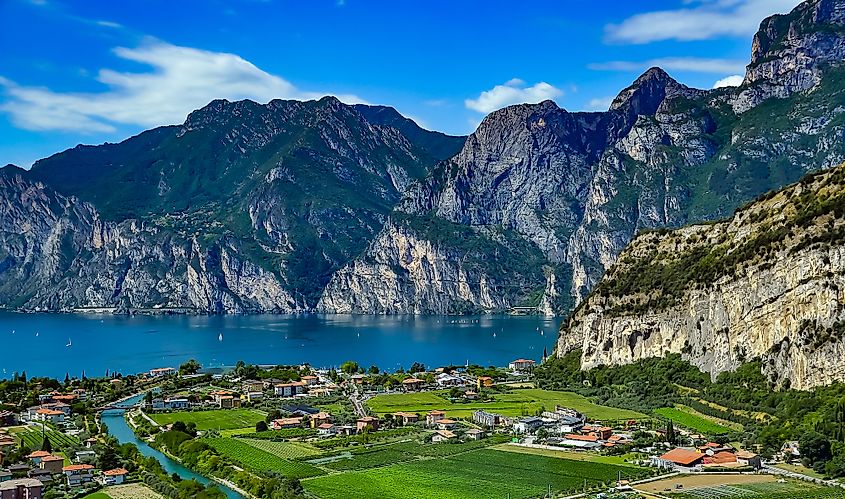
Garda is an elongated lake resembling a fjord and is narrow on the northern part and widens into an irregular circular basin on the south. It resembles an animal foot. The lake is surrounded by several mountains, including Mount Baldo on the east, which separates it from Adige River Valley. It is Italy’s largest natural basin and receives inflow from 25 rivers. However, it has only one outflow known as the Mincio River. The Sarca River, Garda’s primary inflow, empties into the lake on the northern end. Other tributaries include Magnone River, Ponale River, and several streams originating from the surrounding mountains. There are numerous islands in Lake Garda, including five major islands. The lake’s largest island is Isola del Garda, formally used as a pirate lair and Roman burial site. The four other main islands are Isola di Bogno, Isola san Biagio, Isola dell’Olivo, and Isolo di Sogno.
Climate In The Area
Lake Garda region experiences a humid subtropical climate that characterizes the inland plains of Northern Italy, with the lake influencing the climate of the surrounding cities. The region’s climate is also described as the temperate Mediterranean. Lake Garda enjoys mild weather and plenty of sunshine which favors the growth of Mediterranean plants like parasol pines, olive trees, and Chinese windmill palms. The lake region’s annual temperature averages 13.7 degrees Celsius, with June to July as the warmest period. December to February are the coldest months, with the temperature falling below zero degrees Celsius. The lake experiences two important winds due to its north-south orientation towards the Po Valley. The winds descend from the nearby mountains in the morning and flow back beginning early afternoon. The Peler winds, generated in the morning, blow from north to south until noon, while Ora wind starts blowing in the afternoon from south to north.
Ecology Of Lake Garda
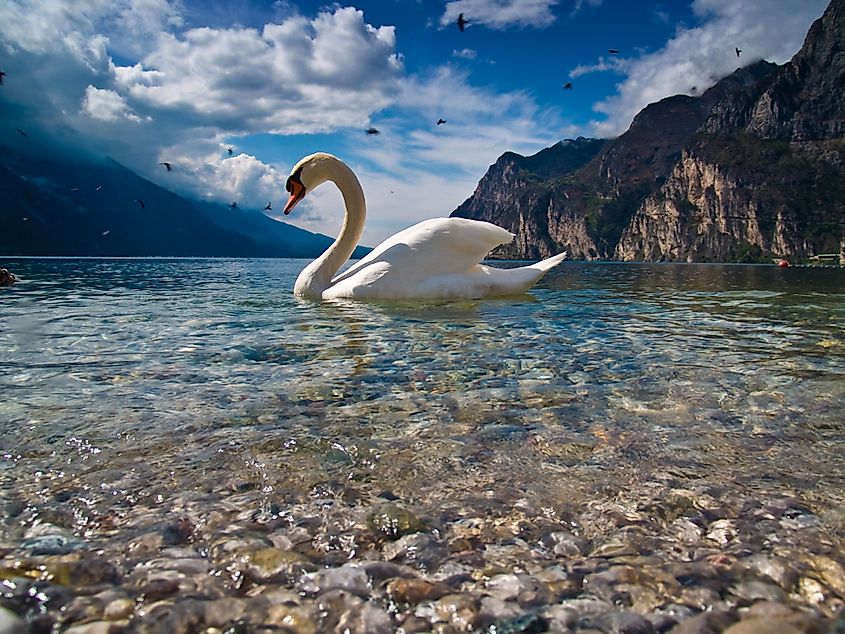
Mediterranean vegetation thrives around Lake Garda due to the mild weather experienced throughout the year, making it a popular resort destination. Other Mediterranean plants growing around the lake include olive trees, Mediterranean cypress, agave plants, fruit plants, and Canary Island date palm. Citrus trees such as satsuma and lemons are also found in certain places. Trees such as juniper, smoke, oak trees, and rare bushes like rose, thorn, and gorse bushes are common on the nearby hills. Morenic flora, found around the lake region, includes spring clover, pulsatilla, field scabious, bellflowers, and the Rapunzel.
Lake Garda carpione is one of the endemic fish species in Lake Garda. Although it has been introduced in several Italian lakes, all the cases have been unsuccessful. The species is categorized as critically endangered due to the declining population, with pollution, overfishing, and competition from introduced species as the major threats. The lake also contains trout, which can grow to a length of 50 cm. The trout are found at a depth of 100-200 meters and feed mainly in zooplankton and crustaceans.
History Of Lake Garda
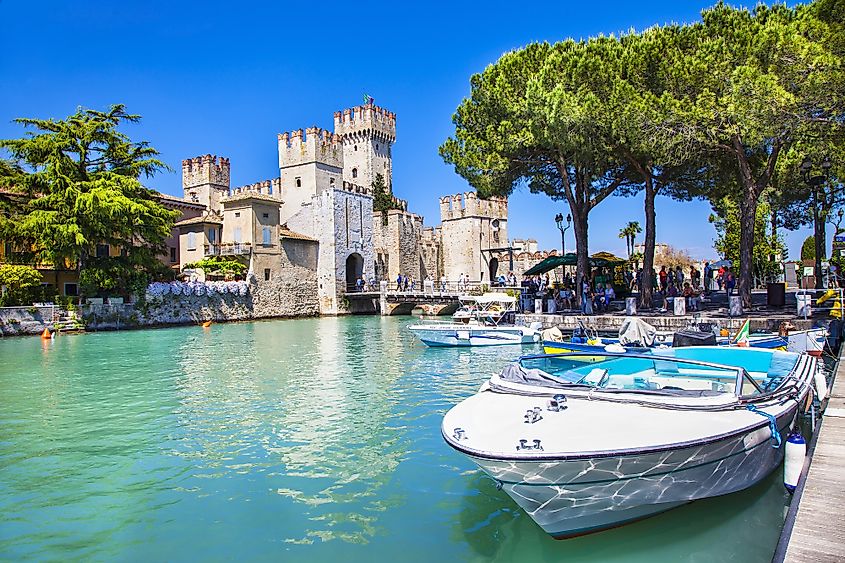
Lake Garda has a glacial origin and began forming over 1.5 million years ago when a large ice sheet slid down the mountains and into a depression and started melting. The large mass of ice melted and formed Italy’s largest freshwater lake. The Lake became part of the Roman Empire around 300 BC, with the Romans dominating it for eight centuries. The Romans referred to the Garda as Lake Benacus. The Battle of Benacus is the first recorded major battle fought along the lake. The battle was fought in 268 BC between the Romans and Germanic tribes. The Lombard people of Spaniards, Franks, and Austrians conquered and took control of the lake region from the Romans.
The most famous and greatest battle ever fought around the lake and in Northern Italy was the 1859 Battle of Solferino. The battle was fought between the French Army and the Austrian Army and involved about 300,000 soldiers. Although the conflict lasted only nine hours, 25,000 soldiers were either killed or went missing and 22,000 wounded. Four treaties, collectively known as the Geneva Convention, were signed, and Red Cross was formed after the 1859 battle. Benito Mussolini founded the Salo Republic near the shore of Lake Garda after stepping down from power. He was also executed near the lake. Lake Garda began attracting a large number of tourists after World War Two, with Gardone becoming the first tourist resort.










